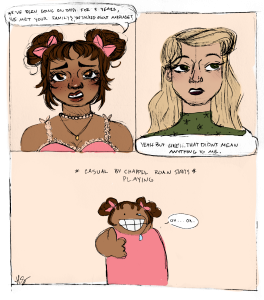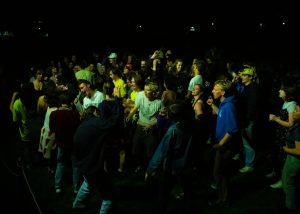You all know the painting “American Gothic,” even if you don’t know that you do. The image of the old bald man, the sour-faced woman, the pitchfork and the house in the background has become the often-parodied iconographic image of America. The painting and the town where the background house resides are the subjects of “This American Gothic.” The documentary screened on March 9.
“It weaves back and forth through this chronological art historical narrative of the painting from 1930 to today and a more contemporary story of this very small Iowa town where they’re trying to rebuild their community through drawing attention to this home,” said filmmaker Sasha Waters-Freyer.
Waters-Freyer is currently an Associate Professor at the University of Iowa in the Department of Cinema and Comparative Literature. Her award-winning films have screened widely at film festivals and been broadcast on the PBS series “Independent Lens.” Previous works include “Razing Appalachia” and “Whipped,” which follows three New York dominatrixes. All of Waters-Freyes documentaries are highly recommended by Whitman Professor of Film Robert Sickels.
“She’s truly an independent filmmaker,” said Sickels. “She makes kind of small-scale films almost entirely on her own for screenings on the festival circuit.”
Inspired by Harvard historian Steven Biel’s book “American Gothic: A Life of America’s Most Famous Painting,” the film looks at Eldon, Iowa, population 998, where the house in the background still stands. It follows the town’s efforts to come back from an economic downturn by building a visitors’ center for the house.
Waters-Freyers is known as an experimental filmmaker and has taken part in the Ann Arbor Film Festival, which specializes in the genre. Much of “This American Gothic” was filmed on her own 16mm Bolex Camera, and used experimental techniques like moving image portraiture and stop-motion animation.
“It was good to see something that’s more accessible to what film students here are going to be realistically doing; more small-scale documentaries,” said sophomore Nick Wood. “It’s cool to see where you could go in film.”









